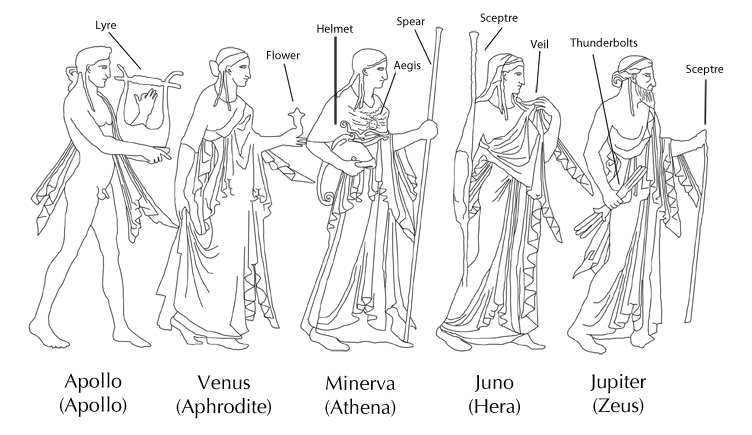Myths and Legends
The colorful adventures of gods and heroes were a source of inspiration not only for storytellers like Homer and Hesiod, but also for artists of the ancient world. From the eighth century BCE onward, mythological subjects appear on nearly every kind of object, including drinking cups, frescoes, and sculptural reliefs. The sheer quantity and range of these objects show that myths played a very important role in the daily lives of Greeks and Romans.
Myths originated in the Greek world as away to explain human life and experience, with the Olympian gods symbolizing distinct qualities. Over time, the cast of characters became even richer, including nymphs, satyrs and other woodland deities, monsters of every shape and size, and heroes—demi-gods possessed of immense strength, bravery, and wile—like Herakles and Odysseus. These heroes provided mythical exemplars for human behavior within a dynamic and dangerous world, where the recurring themes were those of passion, courage, betrayal, pursuit, and revenge.

Later the Romans would assimilate the Greek gods and heroes into their pantheon, giving them new names and adapting them to better suit Roman moral sensibilities, as well as the shifting political scene from republic to empire. For example, the Greek goddess Aphrodite, the personification of love, became the Roman Venus, the mother of Aeneas and ancestress to all Romans. Similarly, Zeus evolved into Jupiter, Athena to Minerva, and Hera to Juno, each assuming central roles in the imperial state cult.
At the core of classical religion was a belief in a working relationship between human beings and their deities based on a concept of exchange. In return for sacrifices, libations, and other votive offerings, gods and heroes were expected to grant the worshipper gifts, help, or favors. The fact that Greeks and Romans believed in such dynamic, personal relationships with the gods according to one’s needs and circumstance probably explains the popularity of mythological images in both the domestic and public spheres.
Although there are numerous versions of Greek and Roman myths and legends, the familiar gods and heroes can consistently be identified by their attributes—an object or an item of clothing—or by certain actions that establish an iconography typifying their character. Herakles, therefore, is often shown donning his lion-skin and holding a club as reminders of his 12 heroic labors, while Athena is depicted with a helmet and aegis as symbols of her embodiment of courage and skill in battle. In the marble fragment at left, the scales of her gold aegis ripple like snake skin, and an image of Medusa’s severed head is displayed like a crest.
Image credit: Diagram of Archaistic relief fragment with procession of five divinities, 25 BCE-14 CE, Yale University Art Gallery. Drawing by Rachel Beaupré.

 Earlier
Earlier Earlier
Earlier









